From CDM
…For who is this uncircumcised Philistine, that he should defy the armies of the living God?” (1 Samuel 17:26).
From CDM
…For who is this uncircumcised Philistine, that he should defy the armies of the living God?” (1 Samuel 17:26).
Are you an avid golfer? Then you know the beach is an awesome place to fit in a round. Save enough room in your vehicle to toss your golf bag and you’re set. No room? You’re still good as many places allow you to rent clubs if you didn’t bring your own or couldn’t. Heck, if you fly you can check your bag (hopefully in a lockable hard case) and have it sent with you for your beach vacation. Rather than using a golf cart at the golf course, walk it and carry your clubs or rent a bag cart that you can pull behind you.
Most hotels that you stay at during your beach vacation should have a pool. For many, that’s an area where you jump in to cool down and then hop out to lay on lounge chairs and work on your tan so everyone can talk about how dark you look once you return home. Well, that pool is another one of the great cardio options you have available nearly all day long, so there is no excuse why you can’t burn a couple hundred calories while working on getting golden bronze. Simply hop in the pool and swim or walk laps. After a little while, jump out and go back to laying on your lounger so you can relax and take in some natural vitamin D (just make sure to apply some sunscreen).
From CDM
“For promotion cometh neither from the east, nor from the west, nor from the south. But God is the judge: he putteth down one, and setteth up another” (Psalm 75:6, 7).
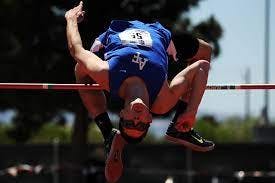
The Southeastern Conference (SEC) produces some of the most explosive athletes in track and field every year. The conference had winners in the men’s and women’s long jump, women’s triple jump, and women’s high jump. Taking 4 of 6 jumping events at last week's outdoor national championships in Eugene, OR.
Jasmine Moore of the University of Florida was the first athlete to ever win every conference and national championship in the long jump and triple jump in the same year. Florida Coach Nic Petersen takes us through the performance markers and assessments that he uses with his athletes to examine elite track and field performance ability.
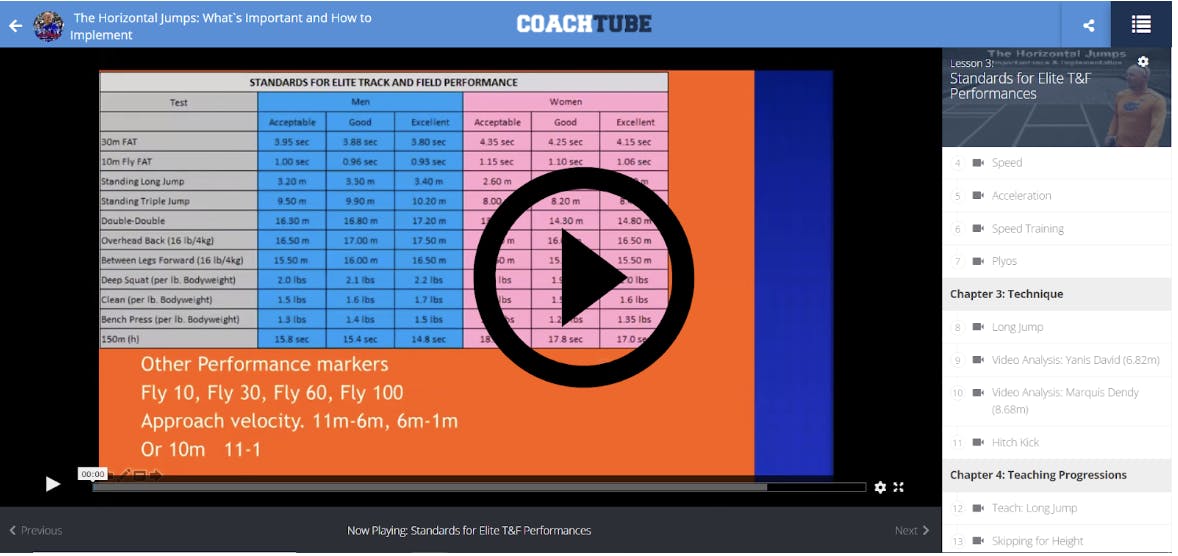
Elastic strength is the ability of tissues to absorb, store, and release energy. This is imperative to building elite explosive power. Preparing the body positions by teaching and cueing them is key according to Coach Todd Lane of Louisiana State University. It wasn’t too long ago that LSU developed JuVaughn Harrison into a 6x national champion in the high and long jump.
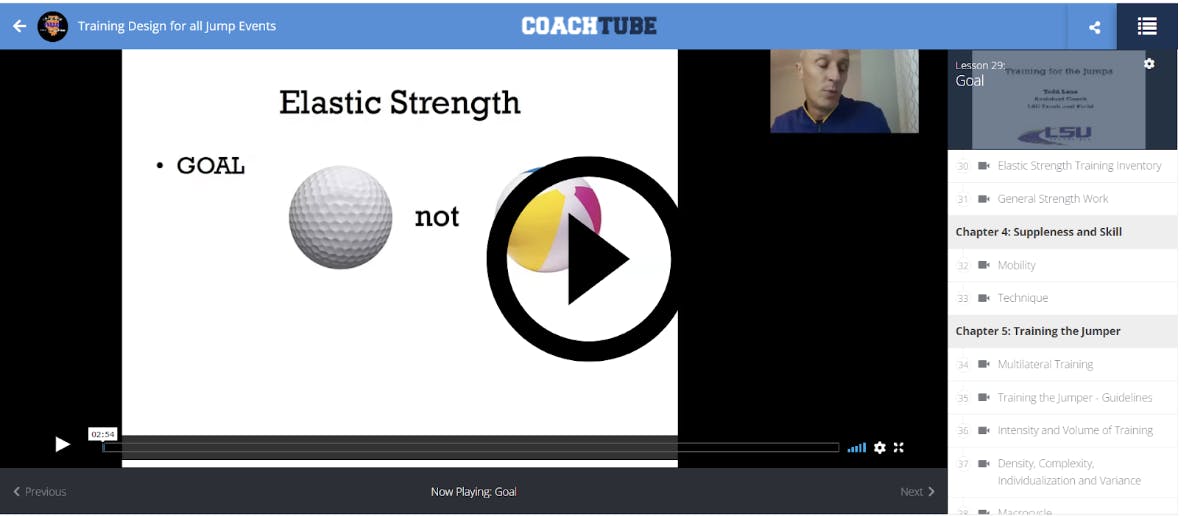
Plyometrics are like glue that holds everything together for jumpers. Nic Petersen uses plyometrics to connect his athlete's acceleration and max-velocity training. He outlines the parameters that he considers in progression for his plyometric training.
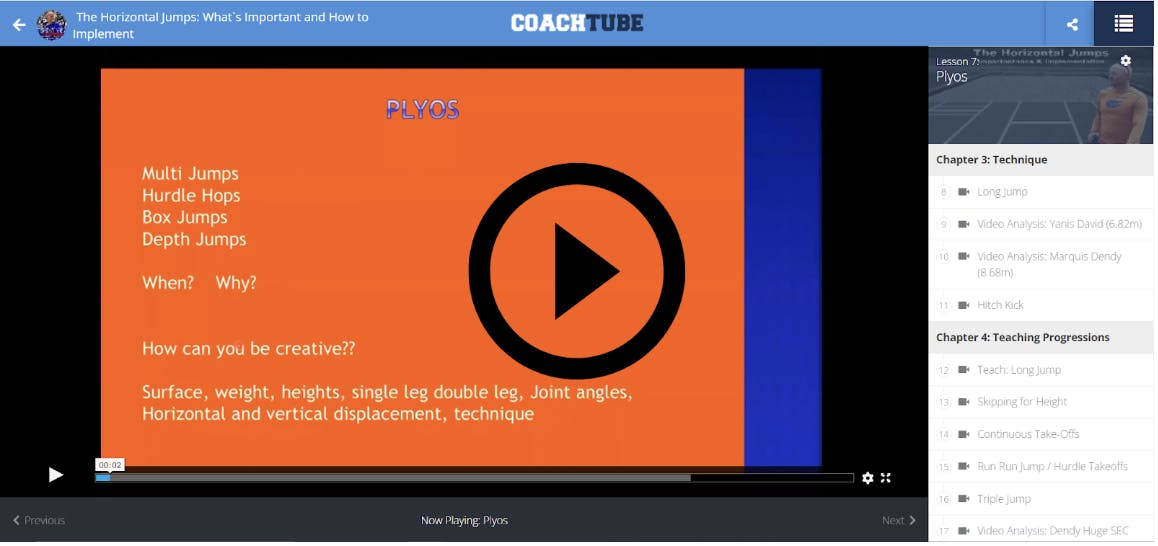
Errors will be common in planning and developing elite explosive power. Very few have got it perfect in their plan in history. The best thing coaches can do is examine the mistakes of the past. Todd Lane examines 4 common errors when training jumpers.
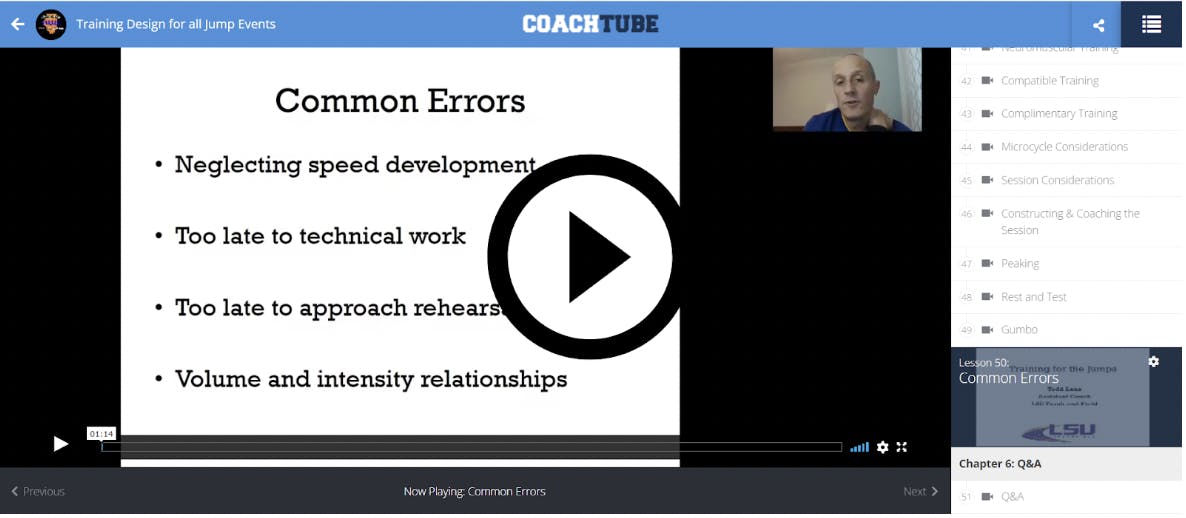
While the SEC might be the most dominant league in recent years. If you’ve paid attention to the results, you’ll notice a couple other schools near the top with champions and all-americans in the recent events. Coach James Thomas of Texas Tech coached two women in the top 3 finishers in the triple jump and Coach Shawn Jackson of Texas Christian University coached the collegiate men’s triple jump champion.
Strength and conditioning is the foundation of any offseason track and field training program. Boo Schexnayder is a name synonymous with detailed training programs and systems for athlete physical preparation. In the following clip, the LSU legend describes key progressions and teaching points for key weightlifting exercises.

Plyometrics are shown to require high numbers of motor units during explosive contractions. This increases force production at high velocities. Coach Larry Judge, a mainstay in the collegiate track and field setting and coaches education for USATF describes exactly what Plyometrics are as an introduction to help coaches better understand exactly how to apply this activity into their own training.

The core is often considered the bridge between the high ground forces of plyometric training or sprinting and the upper body intensive lifting or coordination of limbs. Amana Rego former US olympic trials qualifier and associate head coach at MSU Denver explains 5 reasons why you need to train the core.
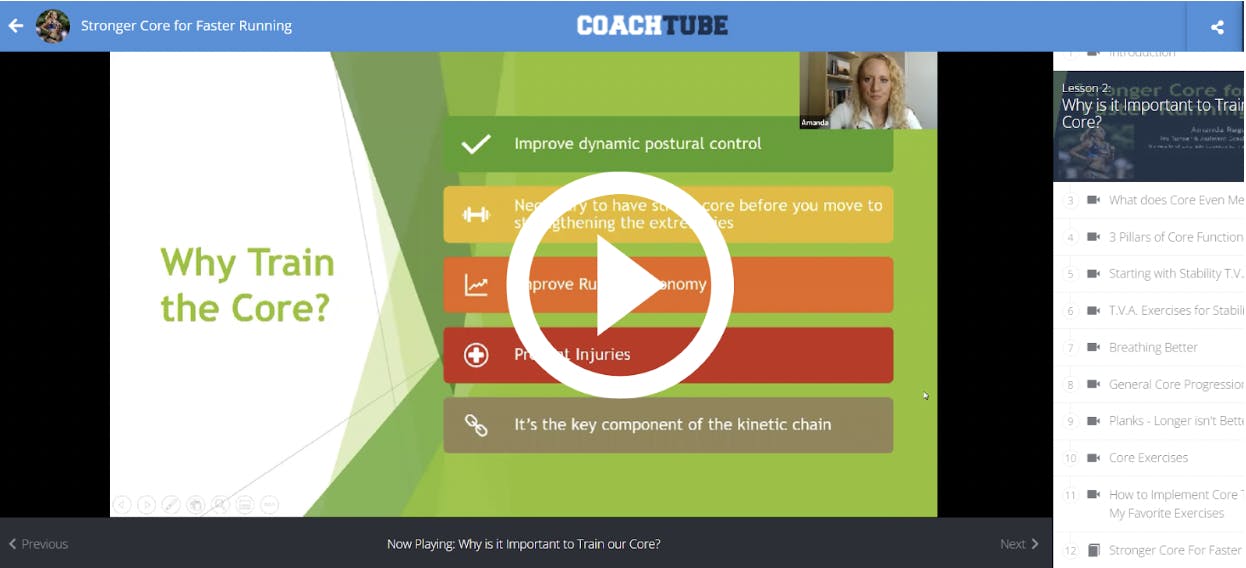
With a basic understanding of strength and conditioning, plyometrics, and core training you’ll give your athletes' summer workouts the boost they need to take them to another level!
Are guns really designed just for killing people? It sounds like a silly question, but I hear it asked or read it in articles or posts enough that I think it's worth taking a moment to understand why someone might think that way, and challenge that presupposition in an honest, persuasive, and respectful way.

First, I want to recognize that there are many legitimate reasons someone might not like guns, or to choose not to own one. Maybe the person experienced a traumatic incident involving a firearm, or because they never learned how to handle one safely, have a fear of guns.
Firearm ownership is an individual choice that someone should make after considering all the responsibilities that come with owning a gun.
But this post is less about someone who chooses not to own a gun, but doesn't care if you or I own one, but more about the spirit behind the idea that guns are designed to kill people.
In a recent post Do Americans Love Guns? I included the often-cited statistic of how many guns Americans own per capita, compared to other countries. (Here is the number of guns per 100 people.)
The statistics show that in America, there are more guns than people. The exact number is unknown, but let's say Americans own far more guns per capita than other countries. With so many gun owners and diverse opinions on guns, it's a natural point of contention.

I think one problem is that the there are people who blame guns, or access to guns, for crime and murder in our country. The influencers in popular culture who see guns this way are highly influential and vocal.
If I blame guns for the ills of society, I see more guns in America than people as a bad thing. I am not surprised when someone murders innocent people in a school, because I believe people only use guns to kill.

If I blame corrupt morality for the ills of society, I see more guns in America than people as a necessary thing. I am not surprised that gun sales are at historic highs, because most people use guns to defend themselves or others against criminals.
So corrupt society, with rampant evil and crime, gives me more reason to own a gun.

See the issue here?
Both statements can't be true. However, if you come to the topic with one of the two viewpoints, the statistics only further confirm your presupposition. And if you're neutral, whoever is more authoritative or convincing is likely to persuade you. From then on, you're likely to view the topic that way.
But we can't do that, we have to look at the topic more broadly.
Guns themselves are neither good nor bad. Some people who love guns are pretty good, and some are evil. Some people who hate guns are pretty good, and others are rotten to the core.
Is Oxycodone designed to kill people? No, like many pharmaceuticals, there is benefit when used appropriately. When used irresponsibly or with bad motives, the results are catastrophic.
Like guns, solutions come from looking at why people turn to drugs for relief and solutions to life's certain struggles. Rarely is it the object that causes the problem, but how we use it.

A gun is a tool. Shane had it right.
I think the recent active shooter incident in an Indiana mall is a perfect picture of this principle.
To summarize the incident, two men carried guns one Sunday in July. Both men went to the mall. Each man ignored the mall's “no weapons” policy. One of the men brought the gun to the mall with a desire to murder innocent people, and he did. The other carried a gun to protect his and others' lives, and he did.
Are guns designed to kill people? Well, guns are certainly used to kill people, but not everyone uses them to kill people. Plenty of people use them for sport, hunting, or collecting. And sometimes, using a gun to defend innocent life results in the killing of an evil psychopath.
Even if someone designed a gun for the killing of humans, the gun has no will of its own. The gun can't persuade someone to use it for evil, just as much as it could persuade someone to risk their life to save others. Let's stop absolving ourselves from responsibility and blaming things like guns, drugs, and smart phones for crime, depression and division.

Would laws preventing Eli Dicken from possessing a firearm, kept the murderer from getting one? If not, isn't it a good thing Eli had one?
Not everything permissible is profitable, and many of us would do well to remember that life isn't just about making ourselves happy. There is more at stake. Self-control, compassion and sacrificial love changes hearts, not legislation.
Tell us what you think and leave a comment below. If you enjoy this content, consider sharing it with others. Also, check out our Concealed Carry Podcast where we tackle all the issues related to responsible gun ownership and self-defense.
From CDM
“So be content with who you are, and don’t put on airs. God’s strong hand is on you; he’ll promote you at the right time. Live carefree before God; he is most careful with you” (1 Peter 5:6, 7, MSG).
After Wimbledon, I started thinking a lot about development… and with more players going to a two-handed backhand, I wanted to share what USPTA Elite Professional Mark Bey says about it from his talk at USPTA Pacific NorthWest last year.

According to Bey, Straight back take backs have fewer moving parts, and achieve a great “pre-stretch” right away, creating great elastic power potential.
The loop takeback has more moving parts, but when it’s properly executed, the stroke tends to have great rhythm, helps with timing...
and as long as the tip of the racket doesn’t drop too soon, there’s an opportunity for tremendous racket acceleration into contact.
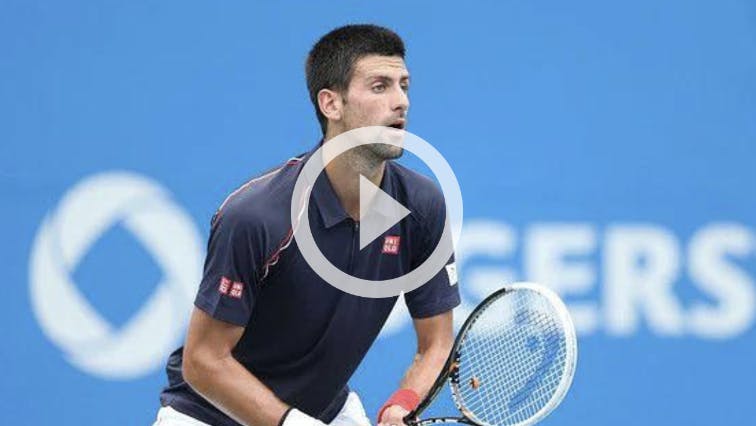
Mark’s got some thoughts around taking it early, loading the outside leg, and hitting deep up the middle (in singles).
Then as your player gets into a rhythm… they’ve earned the right to go for more.
Last idea from Mark I wanted to share with you…
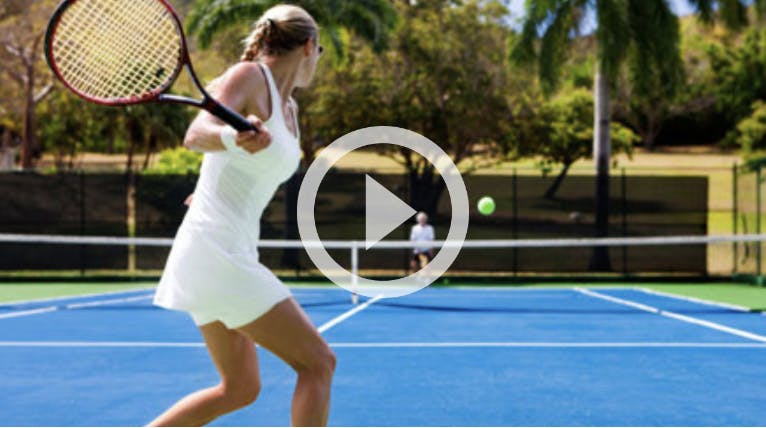
And it’s the Champ of the Court game. (AKA King of the Court).
The cool variations he lists include mean feed/nice feed, a mandatory net appearance, and even changing of court position.
This drill gives you endless ways to engage your students in a competitive environment.
In the meantime, keep up the great work, Coach.